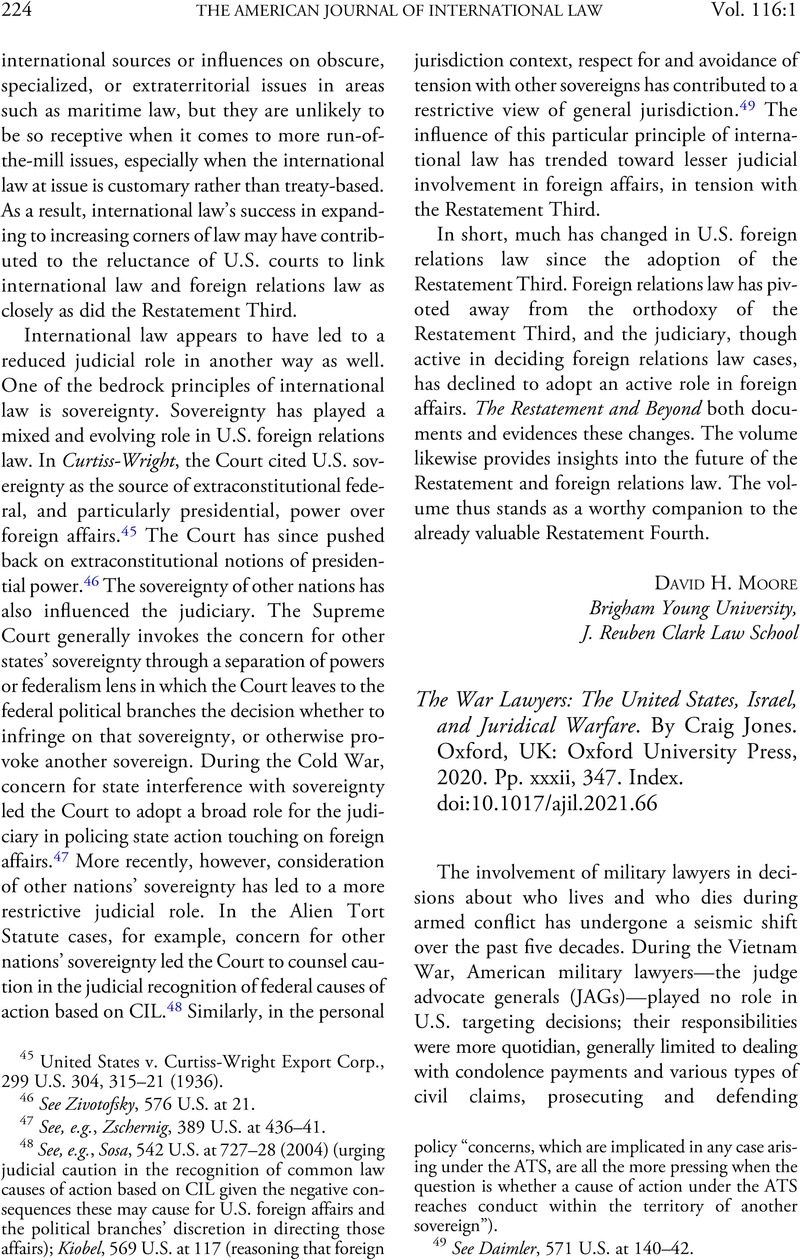Article contents
The War Lawyers: The United States, Israel, and Juridical Warfare. By Craig Jones. Oxford, UK: Oxford University Press, 2020. Pp. xxxii, 347. Index.
Review products
Published online by Cambridge University Press: 14 January 2022
Abstract

- Type
- Book Reviews
- Information
- Copyright
- Copyright © The Author(s), 2022. Published by Cambridge University Press for The American Society of International Law
References
1 See generally George Shipley Prugh, Law at War, Vietnam: 1964–1973 (1975).
2 Jens David Ohlin, The Assault on International Law 8 (2015).
3 Institute for Middle East Understanding, The Dahiya Doctrine and Israel's Use of Disproportionate Force (Dec. 7, 2012), at https://imeu.org/article/the-dahiya-doctrine-and-israels-use-of-disproportionate-force.
4 Stanley Fish, Doing What Comes Naturally: Change, Rhetoric, and the Practice of Theory in Literary and Legal Studies 141 (1990); Johnstone, Ian, The Power of Interpretive Communities, in Power in Global Governance 185–86 (Michael Barnett & Raymond Duvall eds., 2004)Google Scholar.
5 Id. at 186.
6 Id. at 190.
7 Examples of interpretive communities in international law offered by Michael Waibel. See Waibel, Michael, Interpretive Communities in International Law, in Interpretation in International Law 152–53 (Andrea Bianchi, Daniel Peat & Matthew Windsor eds., 2015)Google Scholar.
8 Kevin Jon Heller, “One Hell of a Killing Machine”: Signature Strikes and International Law, 11 J. Int'l Crim. Just. 89, 97–98 (2013).
9 Simplified, the criteria state: (1) all targeting must be proportionate; (2) only combatants and civilians directly participating in hostilities can be targeted; (3) when possible, suspected “terrorists” should be captured instead of killed; (4) terrorists under Israeli security control cannot be targeted; (5) planned attacks require Ministerial-level approval; and (6) assassination is only permissible when necessary to prevent a planned attack; it cannot be used for retribution (pp. 174–75).
10 See, e.g., George H. Aldrich, Progressive Development of the Laws of War: A Reply to Criticisms of the 1977 Geneva Protocol I, 26 Va. J. Int'l L. 693, 695 (1986) (noting that “the delegation as a whole concurred in the conclusions of our report to the Secretary of State that the Conference had succeeded beyond our expectations”).
11 Quoting John G. Humphries, Operations Law and the Rules of Engagement in Operation Desert Shield and Desert Storm, 6 Airpower J. 36 (1992).
12 Elisabeth Schweiger, Targeted Killing and the Lack of Acquiescence, 32 Leiden J. Int'l L. 741, 742 (2019).
13 Id. at 743.
14 Id. at 756.
15 See, e.g., Statement by H.E. Mr. Gholamali Khoshroo, Ambassador and Permanent Representative of the Islamic Republic of Iran, on behalf of the Non-aligned Movement Before the Sixth Committee of the 70th Session of the United Nations General Assembly (Oct. 12, 2015), available at https://www.un.org/en/ga/sixth/70/pdfs/statements/int_terrorism/nam.pdf.
- 1
- Cited by




